Sakineh Mohammadie Ashtiani, 42-year-old Iranian mother of two, has exasperated all legal steps to avoid being stoned any day now. She was convicted in May 2006 of having an “illicit relationship outside marriage” and received 99 lashes for that “crime,” which her son Sajjad, 22, and daughter Farideh, 17, say she did not do. Her son, who was 17 at the time, was present at her flogging and says “They lashed her just in front my eyes, this has been carved in my mind since then.”
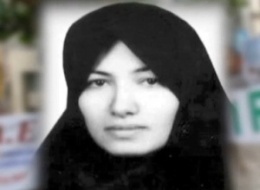
Sakineh Mohammadie Ashtiani - Credit: Huffington Post
Why is she now to be stoned? The Guardian reports that:
Sakineh already endured a sentence of 99 lashes, but her case was re-opened when a court in Tabriz suspected her of murdering her husband. She was acquitted, but the adultery charge was reviewed and a death penalty handed down on the basis of “judge’s knowledge” – a loophole that allows for subjective judicial rulings where no conclusive evidence is present.
The Guardian goes on to report that:
Mohammed Mostafaei, an acclaimed Iranian lawyer volunteered to represent her when her sentence was announced a few months ago. He wrote a public letter about her conviction shortly after. “This is an absolutely illegal sentence,” he said. “Two of five judges who investigated Sakineh’s case in Tabriz prison concluded that there’s no forensic evidence of adultery.
Men who commit adultery often do not receive the same punishment as women do in Islamic countries. CNN.com reports that:
Human rights activists have been pushing the Islamic government to abolish stoning, arguing that women are not treated equally before the law in Iran and are especially vulnerable in the judicial system. A woman’s testimony is worth half that of a man, they say.
Article 74 of the Iranian penal code requires at least four witnesses — four men or three men and two women — for an adulterer to receive a stoning sentence, said Ahadi, of the International Committee Against Stoning. But there were no witnesses in Ashtiani’s case. Often, said Ahadi, husbands turn wives in to get out of a marriage.
Sakineh is to be stoned to death because the judge has supposed “knowledge” of her having had sex with someone who was not her husband…something she says she did not do and for which she has already been punished. Around 40 to 50 other women are awaiting the same fate in Iran right now.
Her children…helped by Mina Ahadi, head of the International Committee Against Stoning and the Death Penalty…are waging an international battle to get support to hopefully reverse the judge’s decision, which is their only hope to spare their mother’s life. They have written the following letter:
Today we stretch out our hands to the people of the whole world. It is now five years that we have lived in fear and in horror, deprived of motherly love. Is the world so cruel that it can watch this catastrophe and do nothing about it?
We are Sakine Mohammadi e Ashtiani’s children, Farideh and Sajjad Mohamamadi e Ashtiani. Since our childhood we have been acquainted with the pain of knowing that our mother is imprisoned and awaiting a catastrophe. To tell the truth, the term “stoning” is so horrific that we try never to use it. We instead say our mother is in danger, she might be killed, and she deserves everyone’s help.
Today, when nearly all options have reached dead-ends, and our mother’s lawyer says that she is in a dangerous situation, we resort to you. We resort to the people of the world, no matter who you are and where in the world you live. We resort to you, people of Iran, all of you who have experienced the pain and anguish of the horror of losing a loved one.
Please help our mother return home!
We especially stretch our hand out to the Iranians living abroad. Help to prevent this nightmare from becoming reality. Save our mother. We are unable to explain the anguish of every moment, every second of our lives. Words are unable to articulate our fear…
Help to save our mother. Write to and ask officials to free her. Tell them that she doesn’t have a civil complainant and has not done any wrong. Our mother should not be killed. Is there any one hearing this and rushing to our assistance?
Farideh and Sajjad Mohammadi e Ashtiani
What happens if Sakineh is stoned? She will be buried in the ground up to her chest. Carefully chosen stones…not too big to make death come too soon and not too small to prolong the process…will be thrown at her head and face until she dies. The public is not going to be allowed to witness this for fear of a backlash. In Somalia, 13-year-old Aisha Ibrahim Duhulow, met a similar fate. She was accused of adultery and stoned to death after she reported having been gang raped. I wrote about this horrific case in an 11/13/08 blog post. I wrote another post about someone being stoned for having married sex and you can read it here.
This is not justice. This is a case of a government misusing supposed religious laws to instill fear in the people in order to control them. Imagine being stoned to death for being falsely accused of having sex with someone who was not your husband. We should all be outraged.
If you are and want to get involved, here are two ways you can:
Facebook page: http://www.facebook.com/pages/Save-Sakineh-Mohammadi-Ashtiani-from-being-Stoned-to-Death-in-Iran/123908540984923?ref=ts&v=wall
Sign a petition: http://www.gopetition.com/petitions/save-sakineh-mohammadi.html
Update 7/9/10 from The Guardian:
Iran has imposed a media blackout over the case of a 43-year-old mother of two who was sentenced to be stoned to death and whose fate is still unclear despite an apparent “reprieve“.
Sakineh Mohammadi Ashtiani is still facing execution by hanging after being convicted of adultery, her son told the Guardian today.
Newspapers, agencies and TV channels in Iran have been banned from reporting Mohammadi Ashtiani’s death sentence, despite an international campaign launched by her children, which has been joined by politicians and celebrities from all over the world.
The campaign, first highlighted by the Guardian last week, has failed to stop the Iranian authorities from pressing ahead.
Last night the Iranian embassy in London issued an opaque statement saying that Mohammadi Ashtiani would not be stoned to death. “According to information from the relevant judicial authorities in Iran, she will not be executed by stoning punishment,” it said.
The statement was not reported inside Iran and neither was the news of stoning death sentences for 15 other Iranians.
UPDATE 7/21/10: The Iranian Supreme Court was to have issued a statement today about Ms. Ashtiani’s case. I read on today’s blog of Maryam Namazie, who is a spokesperson for Iran Solidarity amongst other groups, that Iran’s Supreme Court decision has been postponed for 20 days. There is incredible international pressure for her not to be executed. July 24, 2010 has been proclaimed an international day in support of Ms. Ashtiani and rallies are being held all over the world.
The Guardian reports in its 7/22 issue that:
Last week, Iran imposed a media blackout over Mohammadi Ashtiani’s death sentence, banning newspapers, agencies and TV Channels in Iran from reporting any news about her case.
It also reports that her children are being told to stay silent or face arrest and mentions the http://freesakineh.org website, where signatures for her release are being collected.
UPDATE 8/5/10: This from CNN.com blog is very sad news indeed:
A second attorney representing an Iranian woman whose death by stoning sentence was under review told a human rights activist Thursday that Iranian authorities have decided she will be executed.
Mina Ahadi, spokeswoman for the International Committee against Stoning, said she had spoken to Hotan Kian, an attorney who attended a court session in Tehran Wednesday. He was informed that there would be no more appeals for his client, Sakineh Mohammedie Ashtiani, and that Iran’s high court will decide within a week whether she will be stoned or be executed in another way.
UPDATE 8/11/10: This was posted today on the Facebook page in support of Ms. Ashtiani:
Sakineh Mohammadi Ashtiani, was FORCED by the Regime in Iran to speak against herself, Mostafaei (her lawyer) and the Campaign on Iran state TV. Her lawyer said that she was tortured before interview recorded in Tabriz prison, and fears imminent execution. (Guardian)
UPDATE 8/15/10: This is from CNN’s website:
(CNN) — An Iranian court has delayed the final verdict of a 43-year-old woman sentenced to death by stoning, a human rights group said Sunday, two days after the country announced she will not be executed during the Muslim holy month of Ramadan. The International Committee Against Stoning did not say how it got its information on the postponement of Sakineh Mohammadi Ashtiani’s final verdict, which had previously been scheduled to come down last Thursday. The group said in a statement that the final verdict in Ashtiani’s case is now expected on August 21, the date of her lawyer’s next court appearance.
UPDATE 8/30/10: This is a press release issued on 8/29 by the International Committee Against Stoning and the International Committee Against Execution:
On the 28th of August, in connection with the global protests against stoning and the death penalty that took place in at least 111 cities around the world, the authorities of Tabriz prison informed Sakineh that she would be executed on the 29th of August at dawn. She was told that she could write her will if she wished to do so. Sakineh started to cry and wrote her will. She waited for her execution the whole night. She waited for the guards to take her to the place of execution. Sakineh’s friends in prison showed her their deep grief and tried to comfort and calm her. However, until this hour, noon on August 29th, there has been no news concerning the completion of this death sentence. It seems that the Islamic Republic, while under immense international pressure, wanted to give the impression that it would not bow to world public opinion.
The International Committee against Stoning and the International Committee against Execution strongly condemn such heinous and criminal behavior of the Islamic regime towards prisoners sentenced to death. This [mock preparation for execution] is an indicator of the lack of detainees’ human rights. Over the years, the regime has threatened prisoners with execution sentences in order to intimidate and torture them mentally. Azar Bagheri is a young girl who has been in jail for four years, awaiting execution by stoning. She was 15 years old when she was convicted of adultery. She has been subjected to mock stonings twice [wrapped in a shroud and buried in preparation to be stoned, then released]. The dimensions of this regime’s atrocities have no limits. Opposition by Iranian people and people worldwide is the only way to push back this regime and finally free the Iranian people and all of humanity from this Islamic regime.
The International Committee against Stoning and the International Committee against Execution will continue the campaign to save Sakineh and other prisoners sentenced to execution and stoning. From here, we encourage the world to participate actively in this struggle.
UPDATE 9/3/10: An incredibly moving interview was conducted by Bernard-Henry Levy, a French philosopher and writer with Sakineh’s 22-year-old son Sajjad, who is leading the efforts to save his mother. His mother is accused of complicity in murdering his father and he says it is a “blatant lie.” The interview is posted on Huffington Post at http://www.huffingtonpost.com/bernardhenri-levy/interview-with-sajjad_b_704311.html. Also, Sakineh has been sentenced to another 99 lashes for (and I see two causes quoted) “spreading corruption and indecency” or allowing her cause to be taken to the press.
UPDATE 9/8/10: CNN reports that Iranian Foreign Ministry spokesman Ramin Mehmanparast told state-run Press TV on Wednesday:
The sentencing of Ms. Ashtiani for adultery has been stopped and (her case) is being reviewed again, and her sentencing for complicity in murder is in process.
UPDATE 11/2/10: Sakineh’s son has been arrested, detained, and tortured. The go-ahead has been given to execute Sakineh on 11/3. Heartbreaking. Read about it here.
UPDATE 12/9/10: It was reported that Sakineh was released today. Iranian TV showed clips of her at home with her son. There is some question whether this was done by Iran just for appearances to try and quell the international human rights outcry over Sakineh’s case. Supporters are cautiously optimistic that she truly has been released. You can read about it in the online version of the UK’s Guardian here. The latest is that Iran is now denying that she was released.
UPDATE 1/17/11: This is from Reuters. You can read the full article here.
Iran has suspended a sentence to hang a woman [Sakineh] at the center of a global outcry about a separate stoning sentence, a member of parliament was quoted Monday as saying, but another official suggested the comments were false.

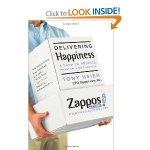
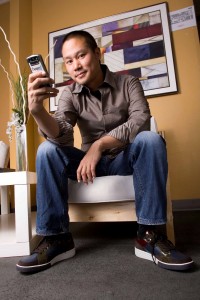


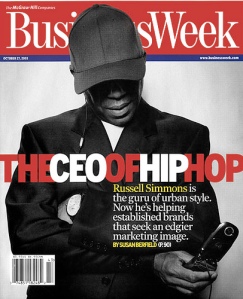




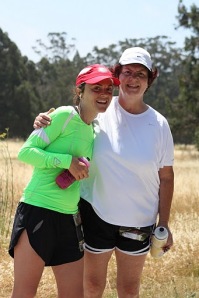



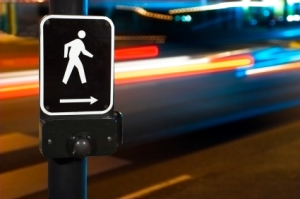
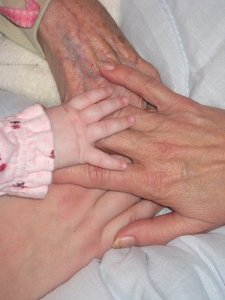

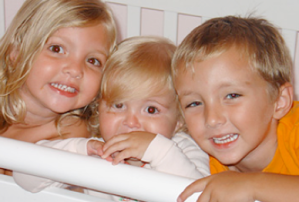


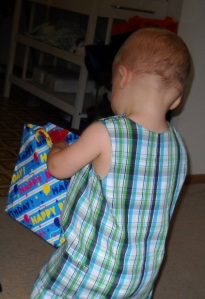
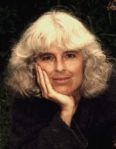

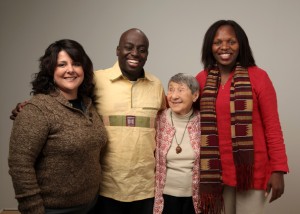
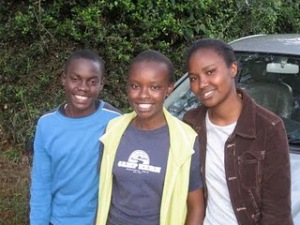

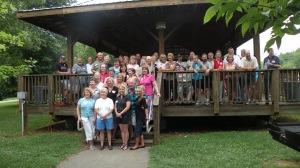
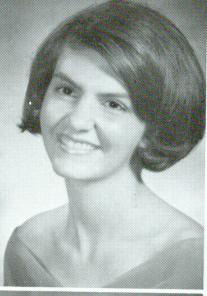

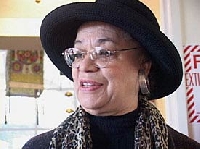


John Francis: 22 Years of Walking. 17 Years of Silence. You: ??
18 09 2011Your environmental footprint. Ever think about it? Care at all about the earth and your contribution to keeping it healthy and vibrant? John Francis is an environmentalist and author of two books: Planetwalker: 22 Years of Walking. 17 Years of Silence. and The Ragged Edge of Silence: Finding Peace in a Noisy World.
John Francis – Credit: Art Rogers, Pt. Reyes
In 1971, he was living in the San Francisco area and witnessed a devastating oil spill in the Bay. He decided to lessen his own demand for oil by giving up riding in motor vehicles, which he did from 1972 to 1994. In 1973 he also decided to be silent and didn’t speak again until 1990.
He walked across the country (and across South America) during his years of silence, getting first an undergraduate degree, then a Masters, and culminating in a Ph.D. in land management with a focus on oil spills.
Everywhere he went, playing the banjo in towns to earn money, people were drawn to this silent ambassador for the environment. He learned what it was to really listen to people instead of constantly waiting for them to stop talking so he could say something. Today, John is married, the father of two children, founder and director of the nonprofit environmental education organization Planetwalk, and a National Geographic Society Education Fellow.
I just finished reading both of his books. I find this man really inspirational…to take such drastic measures because you care about the environment. So what are you doing to reduce your impact on the environment? Anything at all? Consider these facts from About.com:
There is a big movement to encourage people to not eat meat on Mondays (it could be any day) to help reduce their impact on the earth. The website meatlessmonday.com provides this information:
MSN Autos says that 41% of your ecological impact on the earth is due to driving a car. They say that estimates attribute 77 percent of a car’s footprint to the CO2 released from burning gasoline. And statistics show that 40% of trips people make in cars are a distance of two miles or less. What if they just walked or rode a bike instead?
There are many other things you can do to reduce your negative impact on the environment. I sold my car almost two years ago and I walk or take public transportation. I wrote a blog post about this called A Year of Living Carless, which was featured on the front page of WordPress. I have been a vegetarian for almost a year. I take cloth bags to the grocery store (which I walk to) instead of using paper or plastic bags. The walking and eating vegetarian have health benefits, too.
So what are you doing? You don’t have to give up riding in cars for 22 years or stop talking for 17 years to make an impact. Eating one meal a week vegetarian or walking or riding your bike instead of taking the car even one time help. I haven’t owned a car since December, 2009 and eat vegetarian (with a rare piece of fish).
As John Francis says, “How we treat each other is how we treat the environment.” Are you treating your neighbors and mother earth well with your habits?
Here is John talking about his journey in a TED talk:
Comments : 5 Comments »
Tags: Books, Carbon Footprint, Carless, Environment, Environmental Footprint, Inspiration, John Francis, Meatless, National Geographic, People, Planetwalk, Silence, TED Talk, Walking
Categories : Books, Do Good, Heroes, Social Causes, Social Commentary